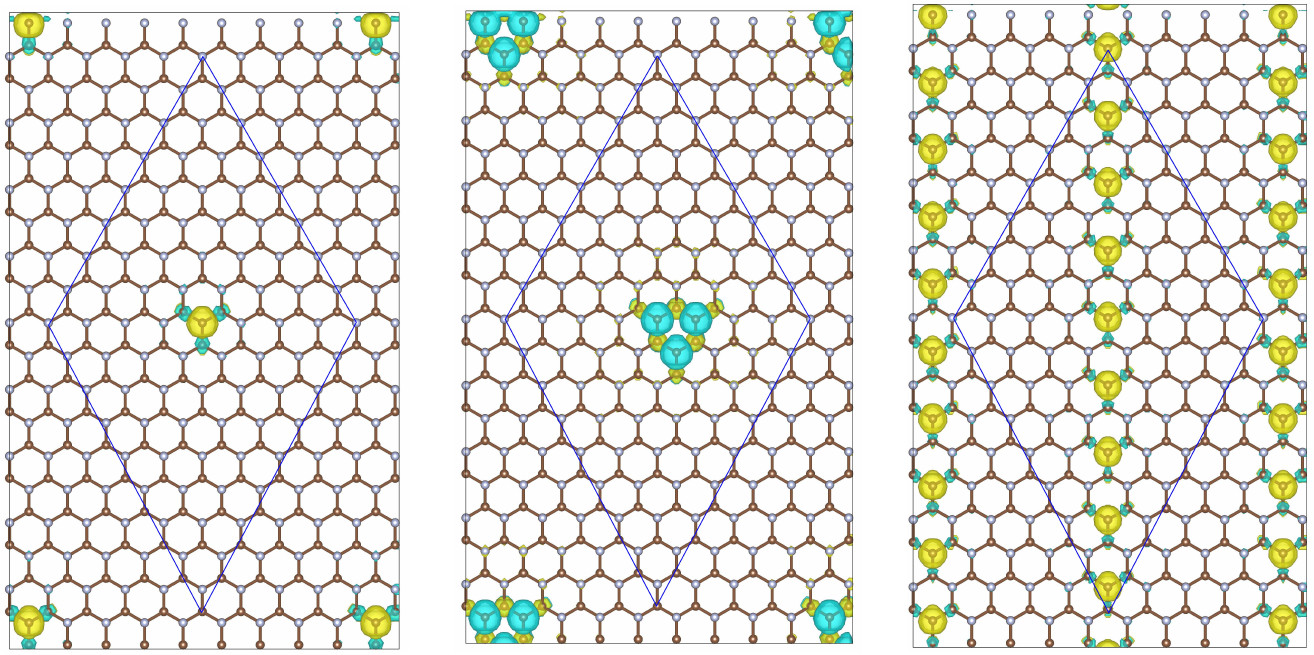Taoufik Sakhraoui and František Karlický have a new manuscript
DFTB investigations of the electronic and magnetic properties of fluorographene with vacancies and with adsorbed chemical groups
(RSC)
Taoufik Sakhraoui and Frantisek Karlicky
Abstract
The electronic and magnetic properties of fluorographene (CF) in presence of F-vacancies defects and/or chemical groups (-OH, -CN, and -NH2) were computationally investigated within the framework of the Density Functional Tight-binding method (DFTB). The current method parameterization allowed us to perform accurate electronic structure calculations (at the level of ab initio many-body methods in CF particular case) for hundreds of atoms in the computational cell. We show that the F-vacancy and/or chemical groups influence the magnetic structure, which depends on the number of defects and their distribution between the two sides of the graphene plane. Interestingly, we pointed out a possibility of imprinting local magnetism not only by F-vacancy and -OH combinations, but also using F-vacancy and -CN or -NH2 groups. In such structures, the magnetic ordering and the total magnetic moments depend on their adsorption sites and their presence in the same or on the opposite sides. We devote particular attention to the interacting chemical group with F-vacancies. The interaction between the adsorbed chemical group and the unpaired spins associated with F-vacancies in CF gives rise to interesting magnetic structures. Antiferromagnetic (AFM) and ferromagnetic (FM) configurations were obtained depending on the adsorbed chemical group. Therefore, the adsorption of a chemical group can be used to systematically tune the phases from FM and AFM ordering. Finally, the zigzag-like direction is shown as most preferred for the defluorination of CF. Stable ferrimagnetic zigzag chains with interesting properties are considered basic magnetic features in perturbed CF. Our work provides new guidelines for engineering multifunctional spintronic components using CF as a base material. We believe, in particular, that the magnetism is dominantly controlled by the F-vacancy, and ferromagnet can ideally be regulated by the adsorption of a chemical group on a defective CF supercell.

